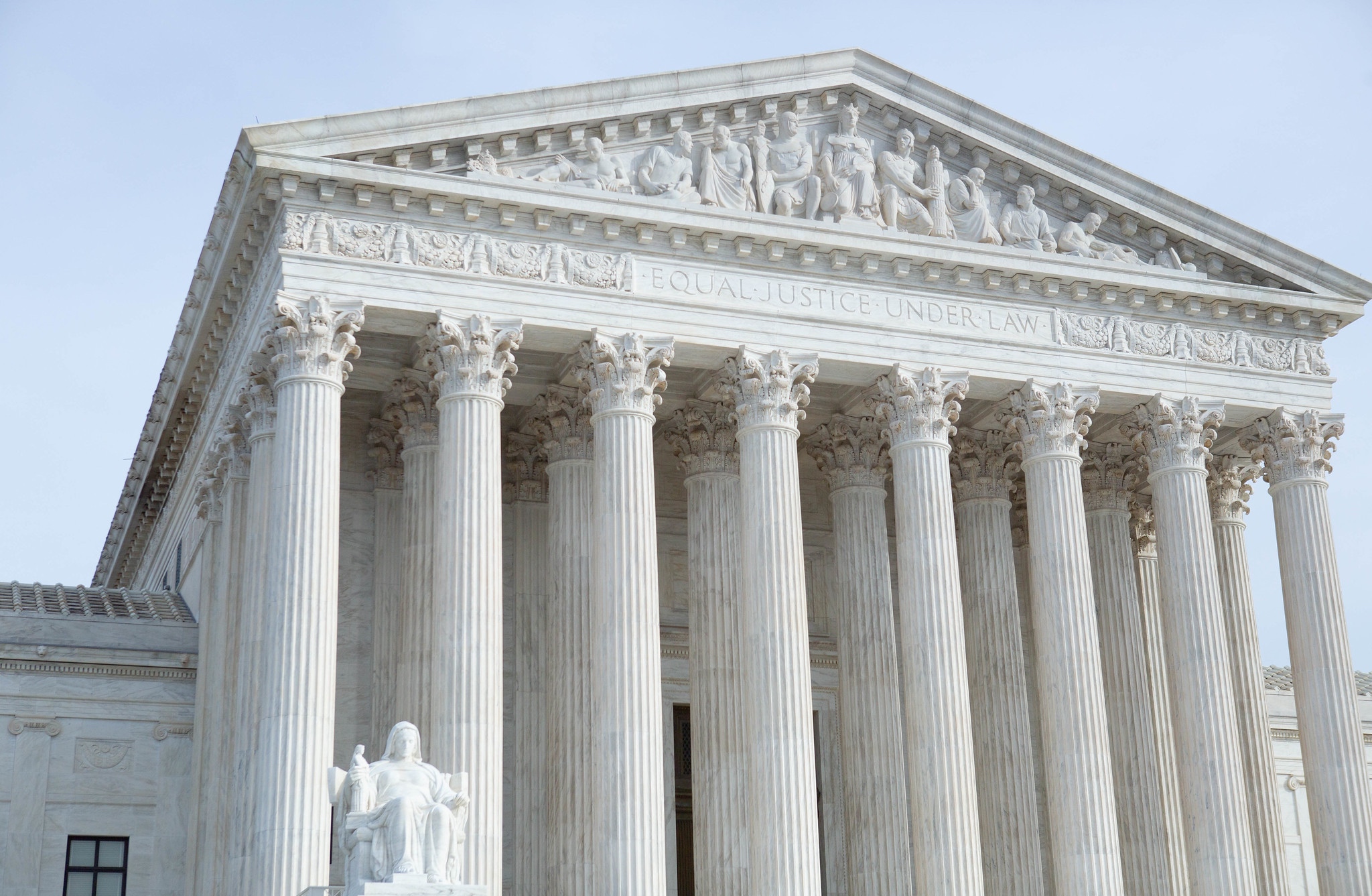The constitutionality of a magnet school’s admissions policy
RELIST WATCH
on Jan 4, 2024
at 3:44 pm
The Relist Watch column examines cert petitions that the Supreme Court has “relisted” for its upcoming conference. A short explanation of relists is available here.
The Supreme Court will consider a whopping 472 petitions and applications at this Friday’s conference, making it the biggest conference since the behemoth end-of-summer “long conference.” The justices will be reconsidering three cert petitions for the first time.
Last June, the Supreme Court invalidated the undergraduate admissions programs at Harvard and the University of North Carolina, holding that they violated the equal protection clause of the 14th Amendment by explicitly considering applicants’ race. Writing for the six-justice majority, Chief Justice John Roberts cautioned that universities could not circumvent the court’s decision “through application essays or other means,” emphasizing that “‘what cannot be done directly cannot be done indirectly.’” Since then, schools and employers have wondered what steps can lawfully be taken to promote racial diversity. The most prominent of this week’s relists, Coalition for TJ v. Fairfax County School Board, implicates that concern.
The Thomas Jefferson High School for Science and Technology, a magnet school in the Virginia D.C. suburbs known as TJ, is widely recognized as one of the best public high schools in America. Until recently, the school evaluated applicants based on a competitive entrance exam as well as grades, essays, and letters of recommendation. In 2020, the Fairfax County School Board instituted a new admissions policy that eliminated the entrance exam in favor of a holistic, two-track system. First, TJ admitted the top students from each public middle school in the area. Second, TJ allocated its remaining seats based not only on academic performance but also on socioeconomic factors, such as whether an applicant comes from a low-income family or a historically underrepresented middle school, or is learning English as a second language. Admissions officers are not told an applicant’s race; they are even screened from the applicants’ names in case they suggest race or ethnicity.
In 2021, a group of parents and alumni who called themselves the “Coalition for TJ” sued the Fairfax County School Board to challenge the constitutionality of the new admissions policy. They argued that the board changed the policy to reduce the number of Asian American students at the school. Under the new policy, the percentage of admissions offers made to Asian Americans fell from 73% to 54%, while the percentage of offers made to students of other races increased: offers to Black and Hispanic students roughly quadrupled (from 2% to 8% for Black students; from 3% to 11% for Hispanic students), and offers to white students increased almost a quarter (from 18% to 22%).
The federal district court in Virginia agreed with the challengers and ordered TJ to stop using the new admissions policy. A panel of the U.S. Court of Appeals for the 4th Circuit stayed that decision to allow the school to continue admitting students under the policy while the case was on appeal.
The challengers then came to the Supreme Court on an emergency basis, asking the justices to reinstate the district court’s order preventing TJ from using the new admissions policy. The court summarily denied that request in April 2022, but Justices Clarence Thomas, Samuel Alito, and Neil Gorsuch indicated that they would have granted relief.
The 4th Circuit issued its merits ruling in May 2023, just before the court’s landmark ruling in the Harvard and UNC cases. By a divided vote (and with every member of the panel writing), the court of appeals upheld TJ’s new admissions policy. The majority held that because the policy does not facially consider race, the coalition had to show either that it nonetheless had a racially disparate impact against Asian American applicants, or that the school board had implemented it to intentionally discriminate against those applicants. The 4th Circuit concluded that the challengers had failed to demonstrate either. Judge Toby Heytens concurred separately to argue that it would be “troubling” to accept the challengers’ claims because the admission policy is “not just race-neutral: it is race-blind,” and thus is at most “a distant cousin” to past programs that have been found wanting. Judge Allison Jones Rushing dissented, saying that contemporaneous school board messages showed that the board wanted to racially balance admissions to reduce the prevalence of Asian Americans.
In Coalition for TJ v. Fairfax County School Board, the challengers – supported by 12 amicus briefs — ask the justices to reverse the 4th Circuit’s ruling. They argue that the federal courts of appeals are divided about whether facially race-neutral means can be used as a proxy for race to achieve racial balancing. They argue that the question is of “national importance” because several school districts have changed admissions and adopted facially race-neutral policies intended to reduce enrollment of Asian Americans and achieve racial balancing. The school board, represented by former Solicitor General Don Verrilli, disputes that there is a circuit split and argues that the policy “was not designed to produce, and did not in fact produce, a student population that approximates [Fairfax County’s] racial demographics.”
Next up is Alaska v. Alaska State Employees Association. In Janus v. American Federation of State, County and Municipal Employees, the Supreme Court held that a state’s mandating payment of public union agency fees from nonconsenting public-sector employees violates the First Amendment. It indicated that states need “‘clear and compelling’ evidence” that employees have waived their First Amendment rights before unions may deduct “an agency fee [or] any other payment” from public employees’ wages.
Soon after Janus, Alaska’s newly elected governor Michael Dunleavy requested a review which determined that the state lacked “clear and compelling” evidence that public employees had waived their First Amendment rights in agreeing to pay agency fees because (1) there was no indication union members were informed of the constitutional rights at stake; (2) there was no indication the consent was freely given; and (3) employees had a limited ability to opt out later. Accordingly, the state’s attorney general recommended that Alaska create its own dues-authorization form that explains the union members’ rights; that Alaska should such require consent forms be provided directly to the state to ensure it was freely given and employees should be able to opt out at any time.
The Alaska State Employees Association threatened suit if the state implemented such measures. It noted that the state’s Public Employment Relations Act, which predated Janus by decades, requires the state to deduct “the monthly amount of dues, fees, and other employee benefits as certified by the [union] and deliver it to the [union].” And the state’s collective bargaininag agreement with ASEA required Alaska to deduct money from an employee’s paycheck and “transmi[t] [it] to the Union” whenever it received a request “in writing on the form provided by the Union.” The state received (and immediately honored) requests from several union members asking to opt out. Dunleavy then issued an order administratively adopting the procedures the attorney general had recommended.
Alaska sued ASEA in state court, seeking a declaratory judgment that the mechanisms for collecting dues from state employees in the state’s collective bargaining agreement with ASEA violates the First Amendment. ASEA filed counterclaims asking the court to enjoin Alaska from implementing the governor’s administrative order and from making any changes to the dues-deduction processes that were in place before the opinion was issued. The trial court ruled for ASEA, holding that the First Amendment “does not require the State to alter the union dues deduction practices in place prior to” the attorney general opinion. The Alaska Supreme Court affirmed, holding that the state’s prior procedures were sufficient to constitute “clear and compelling evidence” of a knowing and intelligent waiver of rights.
The state now seeks review, arguing that its prior procedures were inconsistent with Janus. The issue is important and recurring, Alaska says, because “states across the country have ignored [Janus’s] instructions to demand “‘clear and compelling’ evidence” of an employee’s consent,” and instead “blindly defer[ring] to unions,” based on “the smallest evidence of consent.” ASEA argues that Janus doesn’t require the governor to disregard the PERA or break the state’s collective bargaining agreement. After this conference, we should have a better idea whether the Supreme Court is persuaded.
Lastly, we have American Petroleum Institute v. Minnesota. This case is only the most recent of a string of petitions filed by oil and gas companies asking whether federal district courts have the power to take over state-law claims seeking redress for injuries alleged to be caused by the effect of the companies’ interstate greenhouse-gas emissions on the global climate.
Like a number of other state and local governments in similar cases across the country, Minnesota filed this action against energy companies and their affiliates that produce or sell fossil fuels (and an industry association) in state court, asserting claims under state law to recover for harms that Minnesota alleges it has sustained and will sustain from the companies’ operations and resulting contribution to global climate change.
The companies removed the case to federal district court, asserting federal subject-matter jurisdiction on multiple grounds. Among other grounds, the companies contended that Minnesota’s claims necessarily and exclusively arise under federal common law. The companies argue that, under the Supreme Court’s precedents, federal common law necessarily and exclusively governs claims seeking redress for injuries allegedly caused by interstate emissions.
The district court “reluctan[tly]” sent the case back to state court, and the U.S. Court of Appeals for the 8th Circuit affirmed. The court held that the companies could not remove the case to federal court because Minnesota’s complaint did not expressly invoke federal common law as the basis for any of its claims. The court concluded that the well-pleaded complaint rule allows a plaintiff to avoid federal jurisdiction by affixing state-law labels to claims necessarily and exclusively governed by federal common law.
Judge David Stras wrote a concurring opinion arguing that Minnesota’s “attempt to set national energy policy through its own consumer-protection laws would effectively override the policy choices made by the federal government and other states.” Stras opined that, “for a uniquely federal interest like interstate pollution,” removal perhaps “should” be allowed, but “only Congress or the Supreme Court gets to make that call.”
The American Petroleum Institute now seeks review. It argues both that the 8th Circuit’s decision was incorrect and that its decision implicates two circuit conflicts on important and recurring issues of federal law. Moreover, the group adds, the ruling also implicates the related question of whether federal law necessarily and exclusively governs claims seeking redress for the alleged effect of interstate greenhouse-gas emissions on the global climate.
Although API acknowledges that the court recently declined to take up these jurisdictional issues in related climate change cases, it argues that the need for the court’s intervention has become more pressing, because dozens of state and local governments have filed similar claims in state courts across the country. Review is warranted, the group says, because – as Stras observed – the “end game” in these lawsuits is “clear”: “[to] change the companies’ behavior on a global scale” to affect the national security, economic, and energy policy of the United States. The time for review, API says, is now. We should know before the end of January whether the justices agree.
That’s all for now. Until next time, stay safe!
New Relists
American Petroleum Institute v. Minnesota, 23-168
Issue: Whether a federal district court has removal jurisdiction under 28 U.S.C. 1331 and 28 U.S.C. 1441 over putative state-law claims seeking redress for injuries allegedly caused by the effect of interstate greenhouse-gas emissions on the global climate.
(relisted after the Dec. 8 conference)
Coalition for TJ v. Fairfax County School Board, 23-170
Issue: Whether the Fairfax County School Board violated the 14th Amendment’s equal protection clause when it overhauled the admissions criteria at Thomas Jefferson High School for Science and Technology.
(relisted after the Dec. 8 conference)
Alaska v. Alaska State Employees Association, 23-179
Issue: Whether the First Amendment prohibits a state from taking money from employees’ paychecks to subsidize union speech when the state lacks sufficient evidence that the employees knowingly and voluntarily waived their First Amendment rights.
(relisted after the Dec. 8 conference)
Returning Relists
74 Pinehurst LLC v. New York, 22-1130
Issues: (1) Whether a law that prohibits owners from terminating a tenancy at the end of a fixed lease term, except on grounds outside the owner’s control, constitutes a physical taking; and (2) whether allegations that such a law conscripts private property for use as public housing stock, and thereby substantially reduces its value, state a regulatory takings claim.
(relisted after the Sept. 26, Oct. 6, Oct. 13, Oct. 27, Nov. 3, Nov. 9, Nov. 17 and Dec. 8 conferences; rescheduled before the Dec. 1 conference)
335-7 LLC v. City of New York, NY, 22-1170
Issues: (1) Whether New York’s Rent-Stabilization Laws and accompanying regulations effect a per se physical taking by expropriating petitioners’ right to exclude; (2) whether the laws effect a confiscatory taking by depriving petitioners of a just and reasonable return; and (3) whether the laws effect a regulatory taking as an unconstitutional use restriction of petitioners’ property.
(relisted after the Sept. 26, Oct. 6, Oct. 13, Oct. 27, Nov. 3, Nov. 9, Nov. 17 and Dec. 8 conferences; rescheduled before the Dec. 1 conference)
Glossip v. Oklahoma, 22-6500
Issues: (1) Whether a court may require a defendant to demonstrate by clear and convincing evidence that no reasonable fact finder would have returned a guilty verdict to obtain relief for a violation of Brady v. Maryland; and (2) whether suppressed impeachment evidence of the state’s key witness is per se non-material under Brady because that witness’ credibility had been otherwise impeached at trial.
(rescheduled before the Mar. 17, Mar. 24, Mar. 31, Apr. 14, Apr. 21, Apr. 28, May 11 and Dec. 1 conferences; relisted after the Sept. 26, Oct. 6, Oct. 13, Oct. 27, Nov. 3, Nov. 9, Nov. 17 and Dec. 8 conferences; rescheduled before the Dec. 1 conference)
Glossip v. Oklahoma, 22-7466
Issues: (1) Whether the state’s suppression of the key prosecution witness’ admission that he was under the care of a psychiatrist and failure to correct that witness’ false testimony about that care and related diagnosis violate the due process of law under Brady v. Maryland and Napue v. Illinois; (2) whether the entirety of the suppressed evidence must be considered when assessing the materiality of Brady and Napue claims; and (3) whether due process of law requires reversal where a capital conviction is so infected with errors that the state no longer seeks to defend it.
(relisted after the Sept. 26, Oct. 6, Oct. 13, Oct. 27, Nov. 3, Nov. 9, Nov. 17 and Dec. 8 conferences; rescheduled before the Dec. 1 conference)
Speech First, Inc. v. Sands, 23-156
Issue: Whether university bias-response teams — official entities that solicit, track, and investigate reports of bias; ask to meet with perpetrators; and threaten to refer students for formal discipline — objectively chill students’ speech in violation of the First Amendment.
(relisted after the Nov. 17 and Dec. 8 conferences; rescheduled before the Dec. 1 conference)






